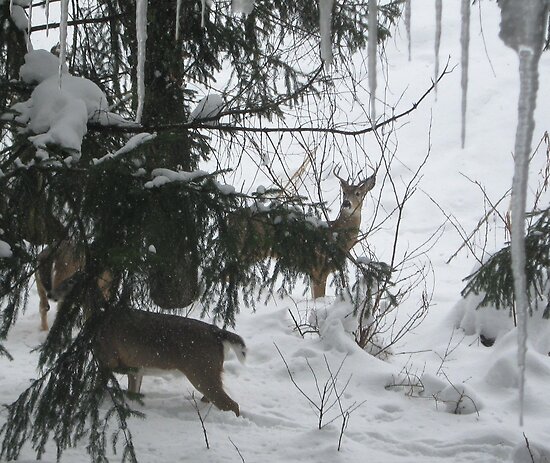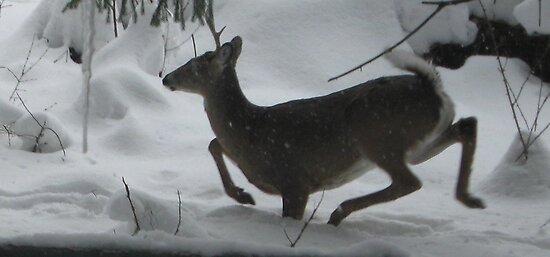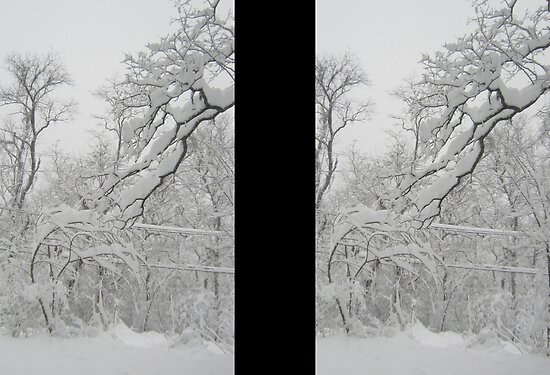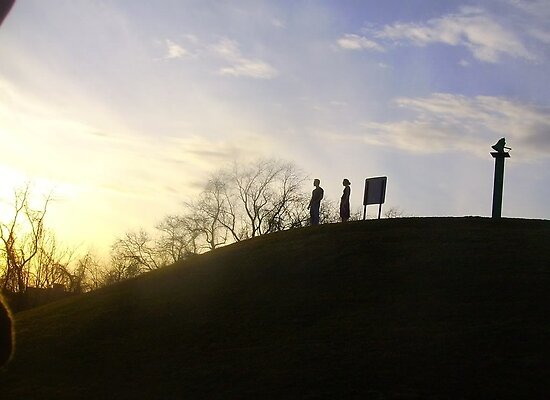The Dawn Choir praises the efforts
of Grandfather Sun.
Sky Woman brightens
and Day has begun.
Mist becomes dew,
Jewel-bright and gleaming.
In silence,
She steps
from waking to Dreaming.
Her voice is as gentle
as gossamer wings,
easily lost
in the rush of the winds,
as she sings….
“Softly,
dance upon the Earth!
Gently,
move through the brambles of this life!
Kindly,
with open heart,
show your worth!
Can you hear me in the silence, oh my brother?
Do you see me hidden in the stillness, little sister?
I am there…
Hiding
Waiting
Hoping
Dreaming
of the day when…
I will not run before
Your Anger,
Your Hurt…
Your Hunger!”
With a rustle,
She slips from forest to field.
With a whisper,
She urges us to yield…
“Only in Silence,
will you know the heartbeat
of our Mother!
Only in Stillness ,
will you see the way open clearly before you!
Only with Love,
can Healing and Compassion bloom…
for self or other!
With Love
there is nothing that you cannot do!
Love,
like Life,
unending.
Love,
like a stream of Light,
wending
Its gentle way
through My heart…
to yours…
to your brothers’,
to your sisters’…
’til it forms a bright path
into a better Day!
You must choose to follow…
but I can lead the way!”
For those new to the game, each poem is inspired by a Teacher found in Nature; a star, stone, animal, plant, etc that holds lessons of Wisdom for us. Can you guess who is singing today? Congrats to Jaguarwombyn, Kat Dennis, and Shay for naming this Teacher!
“Love one another and you will be happy. It’s as simple and as difficult as that.” Michael Leunig
“My message is the practice of compassion, love and kindness. Compassion can be put into practice if one recognizes the fact that every human being is a member of humanity and the human family regardless of differences in religion, culture, color and creed. Deep down there is no difference.”
“Whether one believes in a religion or not, and whether one believes in rebirth or not, there isn’t anyone who doesn’t appreciate kindness and compassion.”
“This is my simple religion. There is no need for temples; no need for complicated philosophy. Our own brain, our own heart is our temple; the philosophy is kindness.” His Holiness, the Dalai Lama


The Dalai Lama may very well be the most shining example of Deer wisdom that we have available in today’s society. He continues to amaze me with his ability to generate waves of Love, Harmony, Tranquility, and Innocence wherever he goes, no matter the circumstances. Think of the kindest person you know or have heard of and they will probably have the glow of Deer around them. Like the Strength card in a tarot deck, the most centered Deer people simply shine with the power of their innocent loving ways, their utter certainty that true strength comes through gentleness and intelligent persuasion. Yet unbalanced Deer people can appear grasping, shallow, self-interested, overly sensitive or fearful. Deer are more complex creatures than a single serene and scenic moment might lead one to believe.
There are approximately 34 different types of Deer in the world; red deer, mule, whitetail, sika, and fallow just to name a few. In the interest of brevity, I’ll stick to the the Whitetail, and I’m sure we’ll discuss Creature Teachers in this family like Caribou, Reindeer, and Moose somewhere along the course of this Singing series as they have their own potent messages. However, as with Wolf and Raven, I encourage you to explore all the Deer to get a better understanding of how you connect to this ancient Power Animal.
Whitetail live in a wide variety of terrains from swamp to desert, from deep forest to plain. Coloration will vary with terrain, but generally they are grayer in the Winter, and redder during Summer. Adults have white bands and patches around the nose, eyes, chin and throat, while fawns are spotted and streaked until after their first winter. Females will often gather in groups along with whatever young have been born, and generally have one or two fawns, although triplets aren’t unheard of either. All deer will tend to congregate at prime feeding and watering spots, especially during the favored times of day.
Deer are naturally day creatures, although fear of man has forced most to push their active periods towards the diurnal, hours around dawn and dusk. Otherwise, Deer and Deer people, tend to be social creatures with solitary habits. While they enjoy a good meal shared with their inner circle, at some point they will likely wander off from the group to have a moment by themselves, to “catch their breath”, or just to observe the group for a moment. Remember…Taking it all in at your own pace is a Good Thing!

Deer are naturally sure-footed… and Deer people can be too, so long as they keep their cool, and like deer we operate best when our flight or fight response isn’t triggered. Feeling confindent in your self and surroundings will certainly boost your confidence. Deer can blend amazingly well with their surroundings while remaining highly sensitized to every noise and movement though. Too much chaos will often make Deer people “disappear” in a crowd. Crowds of unknown people tend to make Deer nervous, and in some cases will even trigger panic attacks. Sensory overload can cause these sensitive souls a great deal of stress, especially as Deer (like most Animals) are sensitive beyond just the usual senses.
Don’t get caught up in worrying about what others are thinking though, or how you appear. It is next to impossible to convince someone else that there is no reason to feel bashful, no matter what the situation, but try to remember that we are all only human. Having concern for your fellows is a fine thing indeed, but no one needs to worry themselves sick over how they appear to others or what others think….ever! A very wise lady once said, “Do what you know in your heart to be right, for you will be criticized anyway.” This is just as true as “those who do not learn from the mistakes of the past are doomed to repeat them”! Mistakes are inevitable… it’s how we handle them that’s important. Keep your wits about you, know yourself, be honest, hang on to what you know is True, strive always for awareness and centeredness and you can’t go far wrong!
“I’ve learned to try to sustain myself by holding on to the integrity of who I am. I’m not talking big diva. I’m quiet. I’m shy. And I became stronger when I stopped trying to be the person they wanted me to be.” Crystal Waters
“In the tradition of psychology, what the word shyness basically refers to is if someone is worried about how he or she appears to other people.”Wanda Bethea
“Shyness has a strange element of narcissism, a belief that how we look, how we perform, is truly important to other people.” André Dubus, Broken Vessels, 1991
“We all have these places where shy humiliations gambol on sunny afternoons.” Unknown
Male Whitetail deer grow antlers from April to May which are fully grown by August or September and shed sometime between January and March. Deer antlers are among some of the fastest growing tissues known to man, growing as fast as 1/2" in a day during peak development! While developing, they are covered with a living tissue called “velvet”, and antlers are extremely sensitive and delicate to the touch during this stage of growth. Most antler damage or loss occurs during this period. Older bucks will shed their velvet before younger ones, and northern bucks will shed their antlers before southern ones. Antlers are made of bone, branched, and are yearly growths that begin with a simple spike around the age of 10 months.
Maturity, good nutrition, lack of stress, and good genes will determine the ultimate size and growth of both deer and their antlers. The size, number of tines, and shape of a deer’s antlers will indicate their general health though. In Whitetail, male deer are typically the only ones to grow antlers, although one doe in several thousand will also do so. This is attributed to hormone imbalance, but is also a spiritual reminder that even if the physical evidence isn’t there, that Divine connection still exists. Antlers and horns indicate spiritual antennae; a physical representation of the link between Divine power and purpose, and our own humble selves.
Deer people tend to be extremely sensitive to other people and surroundings, highly intuitive, empathic, and in some cases possess powers of clairaudience or clairvoyance. Dreamtime is important to Deer people as this is when we are least resistive to the hidden messages of the World around us. I highly recommend keeping a dream journal to help strengthen and sharpen these abilities, as well as to keep a solid record to which you can reference as you look for the patterns that will emerge. However they manifest, these abilities will grow within you at an astonishing rate as you tend them, strengthening them with the metaphorical diet and care that they need to properly develop, just like Deer’s antlers. All of this sensitivity can contribute to feelings of anxiety, nerves, and shyness. It takes confidence, dedication, and courage to be truly compassionate and yet it can come as naturally and easily as a breeze too!
“With courage you will dare to take risks, have the strength to be compassionate, and the wisdom to be humble. Courage is the foundation of integrity.” Keshavan Nair

Whitetail deer have scent glands between the two parts of the hoof on all four feet, metatarsal glands on the outside of each hind leg, and a larger tarsal gland on the inside of each hind leg at the hock. Scent from these glands is used for intraspecies communication and secretions become especially strong during the rutting season. Whitetail deer have good eyesight and acute hearing, but depend mainly on their sense of smell to detect danger. Deer people need to be mindful of how they move through life. Every action we take sends signals to the World around us and causes reactions in the people around us whether we, or they, realize it or not. Like a stone dropped in still water, ripples are inevitable, but we can do our best to lessen the impact if we are aware and take steps to train ourselves. Put another way, if we allow stress to dictate our reactions, we will cause a similar undue stress in those around us. Strong emotions leave their subtle mark on people and on places as well. Deer people often pick up on these markers, for good or ill depends on the Deer’s reaction to this stimuli. Balanced Deer are incredibly compassionate, and their sensitive, resilient natures makes them excellent caregivers, religious leaders, therapists, doctors, nurses, emergency workers, diplomats, and teachers, especially for special needs children.
Whitetail bucks are polygamous although they may form an attachment and stay with a single doe for several days or even weeks until she reaches estrus. They do not form harems which they guard from other males, like Elk do though. Does are seasonally polyoestrous and usually come into heat in November for a short twenty-four hour period. If a doe is not mated, a second estrus occurs approximately 28 days later. Mating occurs from October to December and gestation is approximately 6 and a half months. Does are very protective of their young although they must leave them for as much as four hours at a time to forage for food. During these periods, the fawn is left in what the Doe has deemed a safe place and relies on it’s excellently camouflaged coat to survive. Fawns will begin following their mother out at about four weeks and are nursed only about 8-10 weeks. Young males leave their mothers after a year, but females often don’t go off to start their adult lives until about two years.
“Know you what it is to be a child? It is to be something very different from the man of today. It is to have a spirit yet streaming from the waters of baptism; it is to believe in love, to believe in loveliness, to believe in belief; it is to be so little that the elves can reach to whisper in your ear; it is to turn pumpkins into coaches, and mice into horses, lowness into loftiness, and nothing into everything, for each child has its fairy godmother in its own soul.” ~ Francis Thompson
“If you want others to be happy, practice compassion. If you want to be happy, practice compassion.”
“Love and compassion are necessities, not luxuries. Without them humanity cannot survive.”
“When we feel love and kindness toward others, it not only makes others feel loved and cared for, but it helps us also to develop inner happiness and peace.” His Holiness, the Dalai Lama
The number 10 is significant to Deer people and they will often find that things move in cycles of 10 for them. Deer people tend to be highly protective of children or their mates. It is most important that Deer people learn to control their own emotional and rather high-strung reactions in every situation though. Sometimes this shows in the an obvious form like “overreacting” to a stressful environment with an emotional or verbal outburst. In other instances Deer people become self-centered or actively push others out of their lives in an attempt to protect themselves (and others) from their own sharp sensitivity. To such sensitive souls it is hard to imagine overreacting to anything that is important to them, and everything seems in proportion with what their hearts are telling them. Well balanced Deer are very “mothering” individuals who delight in tending those that they love… and they seem to have an inexhaustible supply of Love and generous Kindness for just about everyone!
“Kindness is the language which the deaf can hear and the blind can see. Mark Twain
“Wherever there is a human being, there is an opportunity for a kindness. Seneca
Deer people can be so loving that they see only the best in those around them, which is another danger. They seem to have a renewable supply of faith in their fellows, an enchantingly innocent faith in the inherent goodness of the World around them, a gentle optimism and a fierce appreciation of Beauty that permeates every aspect of their lives. This is part of what makes them so attractive to others and also, unfortunately, allows the predators of society to prey upon them. There is no denying that well balanced Deer people do their utmost to live by the creed, “Treat others the way you want to be treated.”, and they definitely feel a need to help their fellows whenever and wherever the opportunity arises. Unhealthy deer or unbalanced Deer people can collect all sorts of “parasites” or those who prey upon anything they perceive as a weakness.

Deer are often optimistic, compassionate, generous and grateful souls who don’t understand why people can’t just get along , as it seems so obvious and simple. Balanced Deer knows that he is just one link in the chain of Life, and that even his death may serve to feed someone. We see our selves as one unique thread in the enormous tapestry of Unity and Life. “We are all already one” is a common attitude to how balanced Deer people approach life. Like the small herd of deer who so often carve themselves a niche in the tangled slips of woodlaands in the middle of an urban area, there are often more Deer people out there in the World than one might at first suspect. It’s just that so many fall prey to their own inner demons or to some form of social predator that their innocent hearts seldom become evident to the rest of humanity.
Whitetail are among the most shy and nervous of deer. The flash of their white-furred tails and rumps is a universal signal that they are startled and ready to bolt, whether or not they are actually in any danger. They are not especially vocal although fawns will bleat for their mothers and wounded will cry out with a distinctive bawl. Whistles, grunts, wheezes, and snorts are the most common sound to Whitetail and while they are typically used to warn others that danger may be present, they could also indicate some other mood of a given deer such as contentment. We don’t need to be ruled by these heightened senses.
Nervousness, fear, indecision, impulsive choices, and emotional reaction are the biggest hurdles for Deer people. Do not allow emotions to rule your decisions in life. It is all too easy to act in anger, to say or do things that spread those destructive emotions like fear, jealousy, anger, or doubt when we are simply reacting to our own emotions, or even picking up on the high emotions of others. We tend to pick up on the emotions of others, but the trick is to acknowledge these and then help to gently turn them away from destructive directions and into a more positive direction. A frustrated child, a stressed out co-worker, a spouse snarling in worry over household finances…these are all common-place examples of stressful emotions that impact on the sensitive Deer very much as if they have been physically struck.
It is hard not to react to this negatively, which is why it is so important for Deer to be careful how they move through Life. Be aware. Strive for balance. Simply knowing where your emotions end and another’s begins can save a lot of trouble! Empathic Deer can feel the very heartbeat of the World and move instinctively with it to generate the greatest good for all….or they can react blindly to the emotions around them and cause a great deal of havoc by lashing out themselves. Ever see footage of a panicked deer who got trapped in someones house or office, or who lashed out at someone who got too close and startled them? Astounding how much damage a gentle deer can cause!
I want to touch the heart of the world and make it smile." Charles De Lint
“We who lived in concentration camps can remember the men who walked through the huts comforting others, giving away their last piece of bread. They may have been few in number, but they offer sufficient proof that everything can be taken from a man but one thing: the last of the human freedoms — to choose one’s attitude in any given set of circumstances, to choose one’s own way.” Viktor Frankl
“The kindest word in all the world is the unkind word, unsaid.” Unknown

A well-balanced Deer perceives or even anticipates such situations. Wise Deer instinctively examine these times for how best to gently redirect both their own reaction and that of the individual/s broadcasting their particular brand of frustration into an activity that will remove that emotion and replace it with a better one. Deer people will always be on the lookout for ways to turn similarly harmful emotions into more positive ones, and sometimes the best way to do this is simply by not reacting to the destructive emotion. Refusing to participate in or spread the effects of such behavior is a very effective way of using Deer’s natural gentleness to gently nudge others in the right direction. It is also distressingly easy to fall into the bad habit of spreading social entropy in small ways, like making a joke of someone else’s short-comings.

A well-balanced Deer perceives or even anticipates such situations. Wise Deer instinctively examine these times for how best to gently redirect both their own reaction and that of the individual/s broadcasting their particular brand of frustration into an activity that will remove that emotion and replace it with a better one. Deer people will always be on the lookout for ways to turn similarly harmful emotions into more positive ones, and sometimes the best way to do this is simply by not reacting to the destructive emotion. Refusing to participate in or spread the effects of such behavior is a very effective way of using Deer’s natural gentleness to gently nudge others in the right direction. It is also distressingly easy to fall into the bad habit of spreading social entropy in small ways, like making a joke of someone else’s short-comings.
It can also be amazingly draining to constantly be on alert both for yourself and for the reactions of those around you; to watch carefully what you say and do so that you are always promoting the best reactions or aiming for the higher purpose. It is vital that Deer people remember to practice the same understanding, love, gentleness, nurturing and compassion on themselves that they are so willing to give to others. If you don’t take care of yourself, you won’t be able to help anyone else. Take time to soak up some silence and give yourself a few moments of peace each day to revitalize yourself, you deserve it! It is only when we take the time to be still, to contemplate, and to put down the cares that mean so much to us that we will find clarity and balance to deal with the next onslaught with a truly compassionate heart.
“It is in deep solitude that I find the gentleness with which I can truly love my brothers. The more solitary I am the more affection I have for them…. Solitude and silence teach me to love my brothers for what they are, not for what they say.” Thomas Merton
“Thoughts get in the way. People block their minds to the Dream, disbelieve, shut themselves off from the voice of the One. If they listen to themselves, they can hear it, but a person has to tear down the walls he’s built in his mind before he’s free to listen. Most people won’t. It’s too hard. Instead, they fill their minds with petty nonsense, gossip, thoughts of revenge.” Heron from People of the Wolf by Kathleen O’Neal Gear and W. Michael Gear
Whitetail are incredibly agile and can reach up to 30 mph in a fully wooded area! They are good swimmers too and will often enter a body of water to escape predators. Deer people tend to think in swift agile motions and will often appear inattentive as their thoughts bound ahead of them, although they can be slow to implement the changes they have thought about a million times. This is fairly common to cud-chewers of all sorts, as they like to take their time digesting everything they take in. This is a good thing, but try to avoid “chewing your cud” to the point where you suddenly feel as if you are damning yourself through procrastination, and thus startle yourself into jumping to a conclusion or action in a hasty manner.
The home ranges of these deer are generally small, often a square kilometer or less. Deer tend to be modest creatures and homebodies. Whitetail deer feed on a variety of vegetation, depending on what is available in their habitat. They do not migrate to better pastures during Winter, but will hole up in their own territories during heavy snow. Deer people are most comfortable when they feel that they are in their own territory, and will greatly benefit from healthy eating habits with plenty of green stuff.
When their numbers become too high though, deer can cause serious damage to vegetation through over-browsing, and they also represent a health risk as they serve as hosts to the ticks which carry the bacteria responsible for Lyme disease. Yet more evidence that Deer people will interact with their World in ways that they do not even perceive, and therefore need to care for themselves in all nuturing ways to reflect back upon the World in a healthy manner. We’re always our own worst enemies, but won’t humanity in general be better when we All try to live our lives in the least destructive manner possible?
Whitetail are extremely common where they are found at all, and are the most numerous of the large North American mammals. Precise estimates of their numbers have not been made, but it is reasonable to assume that there are probably somewhere between 8 and 15 million on the American continent. They are notorious for using the same routes to move about their home territory, but will not bed down in the same area that they moved through during their active period. Deer are good at finding alternate routes to their goals and should also avoid becoming too dependent upon routine.
Many deer are caught by predators every day simply because they automatically use the same routes to and from their food or water sources, and we would do well to learn from this mistake! If you find yourself doing tasks or moving through your day “without even thinking about it”, perhaps it is time for a change. There are many ways that Deer protect themselves, and a certain amount of shyness is understandable in a sensitive soul. Deer need to be aware of the boundaries without limiting themselves. There is a very large difference, for example, between offering your time, assistance, resources, etc. freely, and being used. This is another difficult area for Deer people who tend to “pick up parasites”, “mother” or attempt to “feed” so many. Recognize that kindness is, indeed, an open door through which true predators will walk into your life, and then guard that door accordingly. Being Compassionate begins with one’s self and there are no appologies necessary for a life well lived. How does Deer appear in your life?

Key Concepts: Gentleness, Innocence, Grace, Peace, Fertility/Abundance, Creativity, Swiftness/Agility, Watchfulness, Sacrafice, Regrowth, Humility, Divine messages, Flexibility, Healing, Heart Chakra/energy/health, Camoflague
Associated with : the Huichol, the Moon, Dawn, East, Winter, Fae energy, Natural Magic/Wisdom, Herbcraft, Artemis, Saraswati, Cernunnos and other horned deities
Potential balancing energies: wolves and other canine teachers, birds like crow, bluebird, etc, grasses, grains,plants like yarrow, blackberry, blueberry, elderberry, mint, plantain, daisies, dandelions, roses, and corn, trees like apple, cherry, oak, pine, and willow, cougars, bobcat, moss agate,
“Beginning today, treat everyone you meet as if they were going to be dead by midnight. Extend to them all the care, kindness and understanding you can muster, and do it with no thought of any reward. Your life will never be the same again.” Og Mandino
“A human being is a part of the whole called by us universe, a part limited in time and space. He experiences himself, his thoughts and feeling as something separated from the rest, a kind of optical delusion of his consciousness. This delusion is a kind of prison for us, restricting us to our personal desires and to affection for a few persons nearest to us. Our task must be to free ourselves from this prison by widening our circle of compassion to embrace all living creatures and the whole of nature in its beauty.” Albert Einstein
“How far that little candle throws his beams! So shines a good deed in a weary world.”William Shakespeare
No comments:
Post a Comment